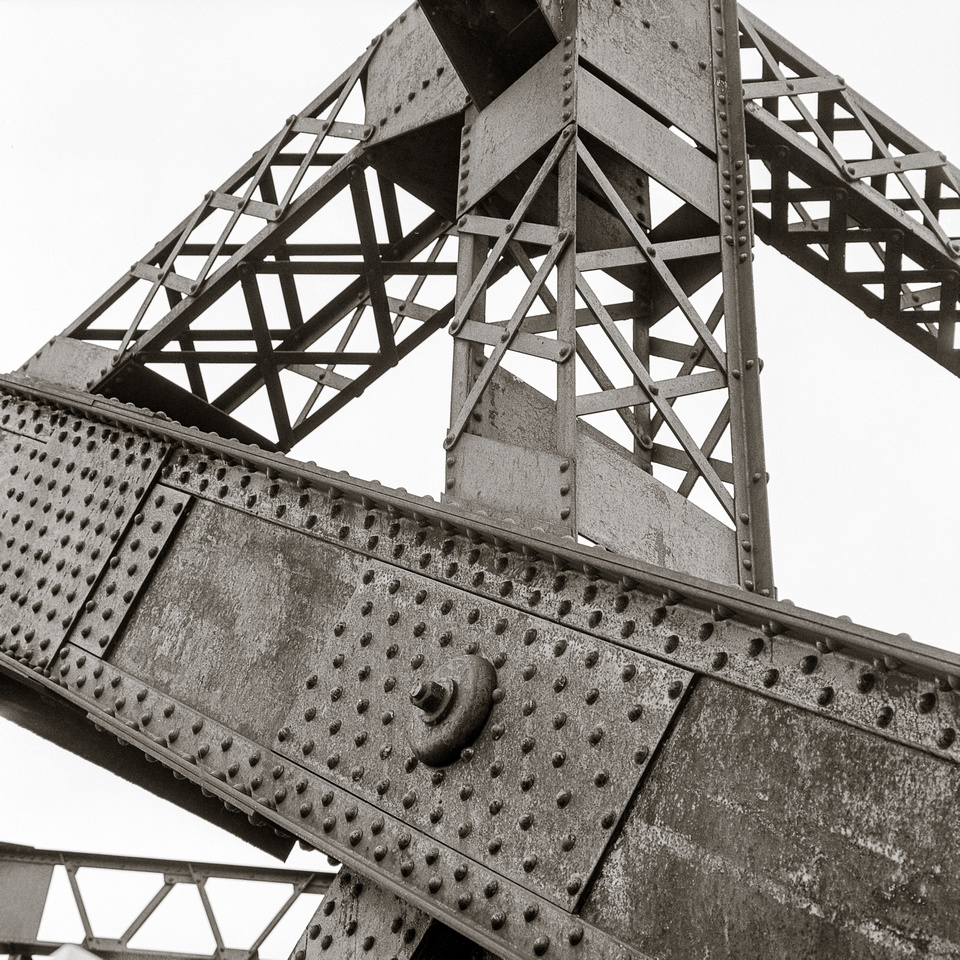On Photographs, Stories, and Poems


Ironwork, Harahan Bridge, Memphis, Tenn., 2019
When asked about what makes photographs "good," many photographers will say that they "must tell a story." The idea of pictures telling stories is a powerful one. It reached its zenith in the heyday of the "picture magazines" of the mid-twentieth century, Life and Look, for example. In these magazines, one found "photo essays," carefully sequenced series of photographs that aimed to move the viewer through a visual narrative and plot with a beginning, middle, and end. When done well, such photographic essays do indeed "tell a story," and they often do it better than words alone.
But I don’t think that all good photographs "tell a story." Some do, but not all. In fact, I have never found the metaphor of storytelling the most helpful one when it comes to photography. Instead, I prefer to think of my photographs and most photographs made by others as visual poems.
Poems are very different from stories. They are highly concentrated forms of expression that use an economy of means to convey complex meaning. Generally speaking, poems don’t emphasize moving the reader through a plot with character development, conflict, and resolution. Narrative movement through time is not at their center. They are more lyric than epic, often emphasizing the seemingly insignificant but telling detail present in an evanescent moment of life. And even when we string together a series of photographs, they are less like a story and more like an anthology of poems, bound together more loosely than a plot.
Poems are also different in that they rely more heavily on the evocative and suggestive, offering through their use of concentrated language a multiplicity of possible meanings. Hence, we see the poet’s predilection for metaphor and word play. What photographer Brassaï said of pictures holds equally true for poems, they should “suggest rather than insist."
But at bottom, the concentrated use of words and the evocative power of poetry are intimately connected to the importance on form, the rigorous organization of discrete elements into a coherent pattern in which the whole is greater than the sum of the parts. Form is the integrative arrangement of disparate elements that make possible beauty. In poetry, form is carried in meter, rhyme scheme, and word sound. These form the skeletal structure on which the flesh of metaphor and meaning hang. While all successful art embraces form there is an unusual intensification and surfacing of it in poetry. In the poem, form rises from the depths and floats on the surface to be more easily seen, heard, and felt.
Photography shares with poetry this intensification and surfacing of form in service of concentrated, evocative meaning. The form of photographs is carried in the symmetry and proportionality of the relationships between the elements included in the photographic frame. The artful use of lines, the deliberate placement of balancing tonalities across the frame, the repetition of shapes and their arrangement into patterns, for example, mirror the intensification and surfacing of form achieved in poetry through meter, rhyme scheme, and word sound. And as with poetry, such form brings harmony, order, and integration to the subject matter.
Photographers and poets also intensify form through a subtractive process. The poet whittles away the stalk of words until only a few are left, excluding all that are extraneous, so that what is important may be seen in a clear and concentrated way. And so it is with photographs. Good photographs are as much about what gets excluded as included in the frame. By excluding extraneous elements, form is rendered visible and powerful as it organizes the essential elements into a whole and completes the illusion of three dimensionality.
But form is not simply about good graphic design or composition. It’s about the soul. We crave form. It speaks to us. It answers to the deepest needs of the human heart.
In his thoughtful book, Beauty in Photography, Robert Adams writes "Why is Form beautiful? Because, I think, it helps us meet our worst fear, the suspicion that life may be chaos and that therefore our suffering is without meaning.”1 To encounter form, to elevate it in artwork, and to pursue it in creativity bring us into contact with a primordial truth; namely, that beneath the chaos and flux, beneath the apparent meaninglessness of so much of daily life, beneath tragedy, mortality, and seemingly senseless suffering is an underlying order to the universe. Form touches the coherence that binds all things together, including tragedy and suffering, and makes of all of it something meaningful.
Form reminds us that there is a place for us in the universe, and while it is not a place of ultimacy or painlessness, it is still a place of hospitality. There’s room for us in the cosmic scheme of things, and we sense that whatever powers weigh down upon us, however terrible and tragic, are not ultimate; we sense, instead, that the powers that uphold us are greater still. Perceiving form reassures us of the ultimate meaningfulness of life, that the world and our lives in it are no cosmic accident. It’s an inoculation against nihilism.
Nihilism, though it goes by many names, is among the greatest threats of modern life. It does not stop at denying meaning. It quickly replaces it with naked power, the cynical denial of all facts, and belligerent egoism.
In the end, form vindicates Dostoevsky’s idiot who announced that "beauty will save the world.”
And photographs, together with the other arts, can also announce this glorious fact.
———————————
1Robert Adams, Beauty in Photography (New York: Aperture Foundation, 1996) , p. 25.